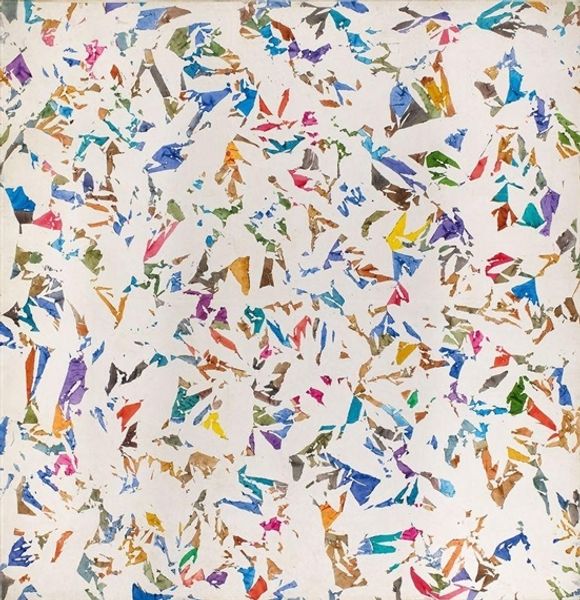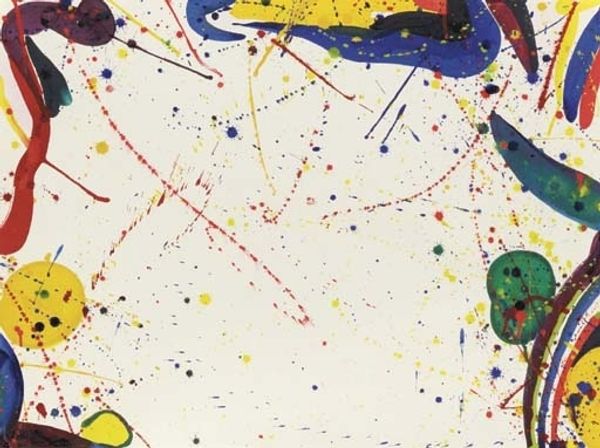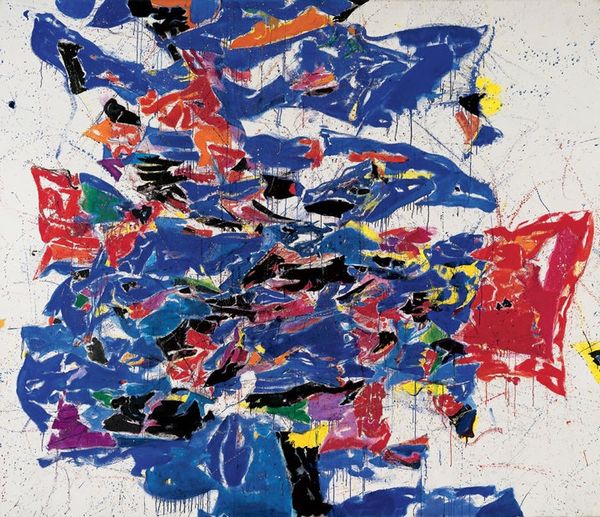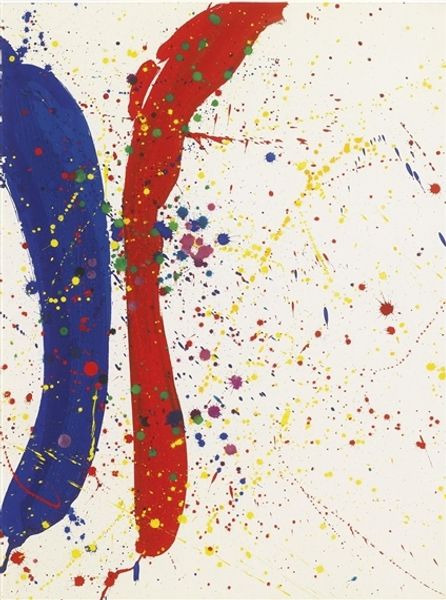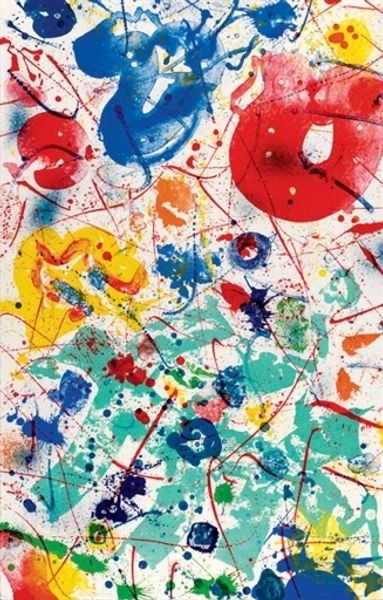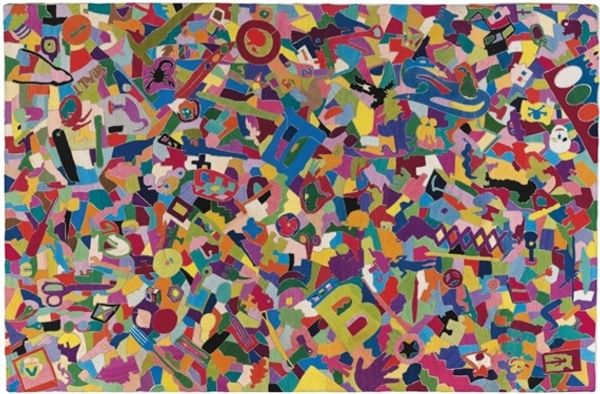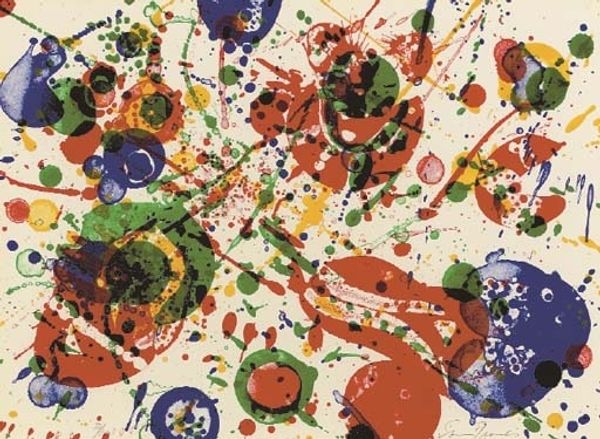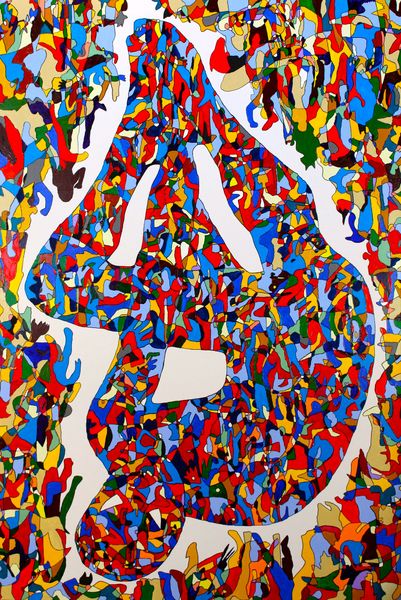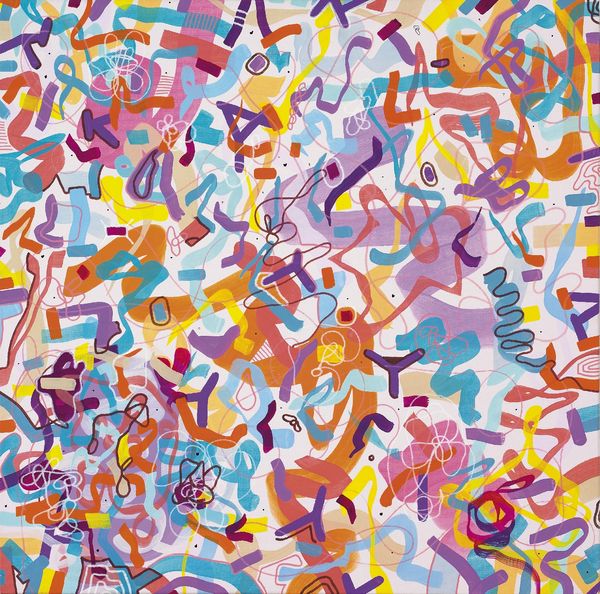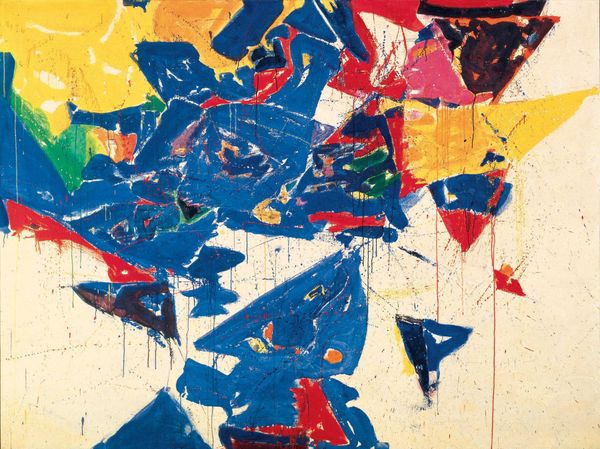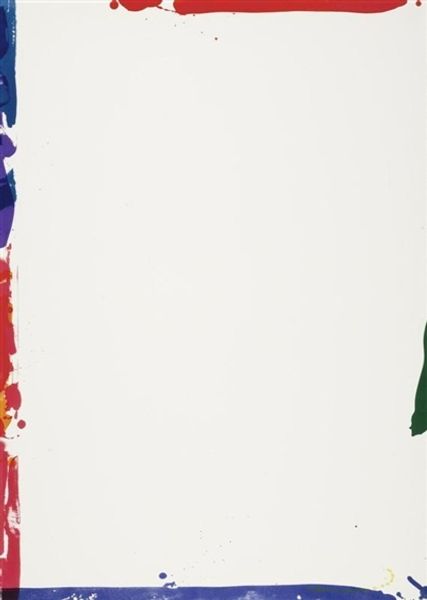
mixed-media, textile
#
abstract-expressionism
#
abstract expressionism
#
mixed-media
#
pattern
#
textile
#
geometric pattern
#
abstract pattern
#
geometric
#
abstraction
#
line
Copyright: Simon Hantai,Fair Use
Editor: This is “Blanc” by Simon Hantai. It appears to be made from mixed media including textile elements, and I find its vibrant patterns so intriguing. What can you tell me about the socio-political context in which it was created? Curator: Looking at “Blanc,” we have to consider Hantai's place within post-war art. His shift towards abstraction in the 1950s mirrors a broader move away from representational art, driven partly by the cultural and political desire to rebuild after the war with new forms of expression. Does the apparent chaos in its pattern strike you as perhaps echoing some of the fragmentation of life during that era? Editor: That's interesting – it does have a sense of breaking apart. So, its visual form communicates a larger societal unease? Curator: Exactly. Then consider how Abstract Expressionism became closely linked to American cultural dominance during the Cold War. In Europe, artists like Hantai were grappling with this influence, adopting aspects but also developing distinctly unique approaches. Did he, through that piece, somehow negotiate his own artistic identity amid these competing ideologies? Editor: So Hantai is taking something and moving into another direction based on its identity. I see in “Blanc” a sort of conversation between the global dominance of abstract expressionism and a localized European response. Do you think the “whiteness” of the canvas plays a specific symbolic role here? Curator: Absolutely. The white can be seen as both a visual and political statement. How might that act of leaving the canvas "blank" in certain areas function within the artistic dialogue of the time? Does it convey anything about him? Editor: Hmm, perhaps leaving the canvas untouched offers a visual resistance to total appropriation or definition? He retains a space for silence, for something uncolonized by the dominant aesthetic. I had never thought of a canvas could do that. Curator: That's an insightful reading. Seeing “Blanc” this way challenges us to consider not only what’s visible, but what is being withheld or resisted within a complex network of cultural and political forces. It provides interesting insights. Editor: I agree. Now when looking at it, this abstract expressionism invites a far deeper reading that enriches our comprehension of post-war identity and visual resistance.
Comments
No comments
Be the first to comment and join the conversation on the ultimate creative platform.
